Carving Out an Art Niche
Art comes in an endless array of mediums, both traditional and nontraditional—even food. The masters at Maniac Pumpkin Carvers in New York are a prime example of unconventional artists, using pumpkins as their canvas to create stunning works of seasonal art. Cofounder Marc Evan discusses how he and Chris Soria's mutual love of art morphed into a gourd–centered business, the unique challenges of pumpkins, and how they earned the Maniac moniker.
What's your background? Have you always been friends? When did you first realize that you wanted to create art?
Chris and I have been artists and friends for as long as we can remember. We first met in sixth grade, and by high school we were best friends and already frequently collaborating on various art projects, including some large murals. We also were responsible for creating an annual Halloween haunted house in our high school for all the kids from the community. Creating super scary and fun things for Halloween is something we’ve been doing together a really long time now.
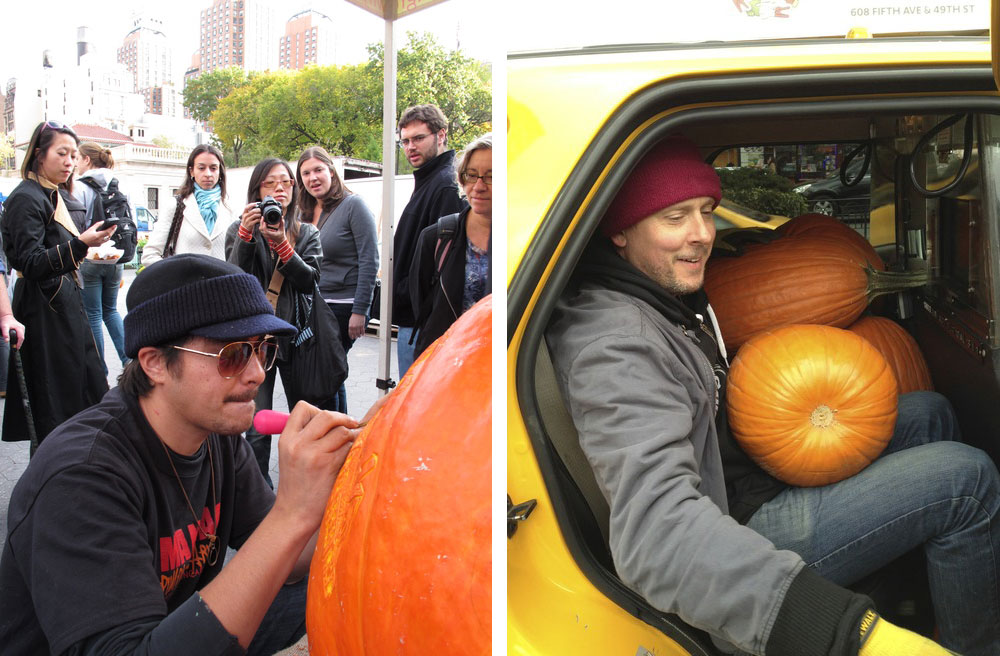
Was pumpkin art a fun goal of yours, or was it a hobby that became a career for the two of you?
We kind of stumbled onto pumpkin carving as a form of art. We were both studying illustration at Parsons School of Design and paying our way through school by working at bars and restaurants in New York. In the early 2000s, we started to mess around with carving pumpkins. They were initially things we would make for the places we worked at, and as gifts for friends and clients. As we started to develop our style, we received more requests from different businesses. Before we knew it, we were getting press requests and drawing attention from people like Martha Stewart, Food Network, Wired, and the New York Yankees. We’ve always had a deep love for all things Halloween, so it was a perfect fit as we expanded our business. It’s still very much a labor of love for us, even though our business and client list have steadily grown over the years. It's an honor to have carved for so many incredible companies, TV shows, and events.

Did other artists influence you? Are you big fans of any another artists' work today?
We have a pretty diverse range of artistic influences. We draw inspiration from many places, including comic books, animated films, album cover art, as well as so many masters throughout history up through today, including many of our friends and contemporaries. We are also really lucky to be friends with many incredible artists, who we get to collaborate with on both pumpkin projects and more traditional art. We draw inspiration from everywhere around us, including New York City.
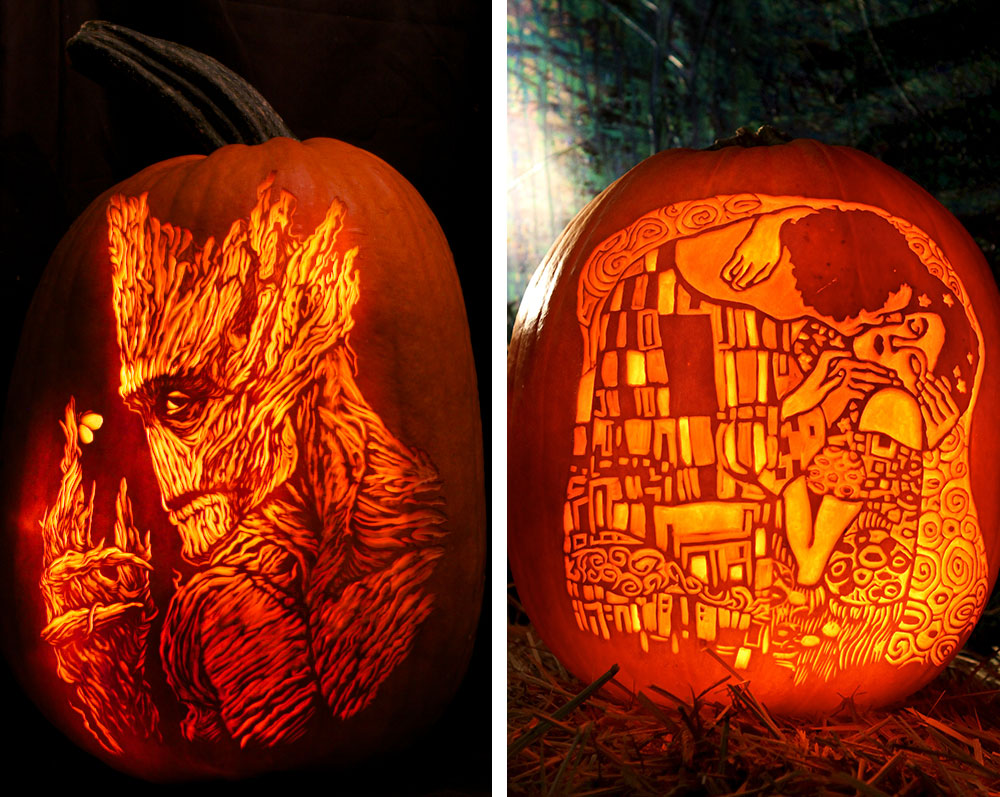
What's the process for creating your amazing pumpkin art?
We first have to decide on the artwork to be carved. Oftentimes, our clients supply us with specific art to be rendered, and other times we have to create images first that will translate well to a pumpkin. We then sketch out the art on the pumpkin and start carving using a variety of carving tools, knives, and sculpting tools.
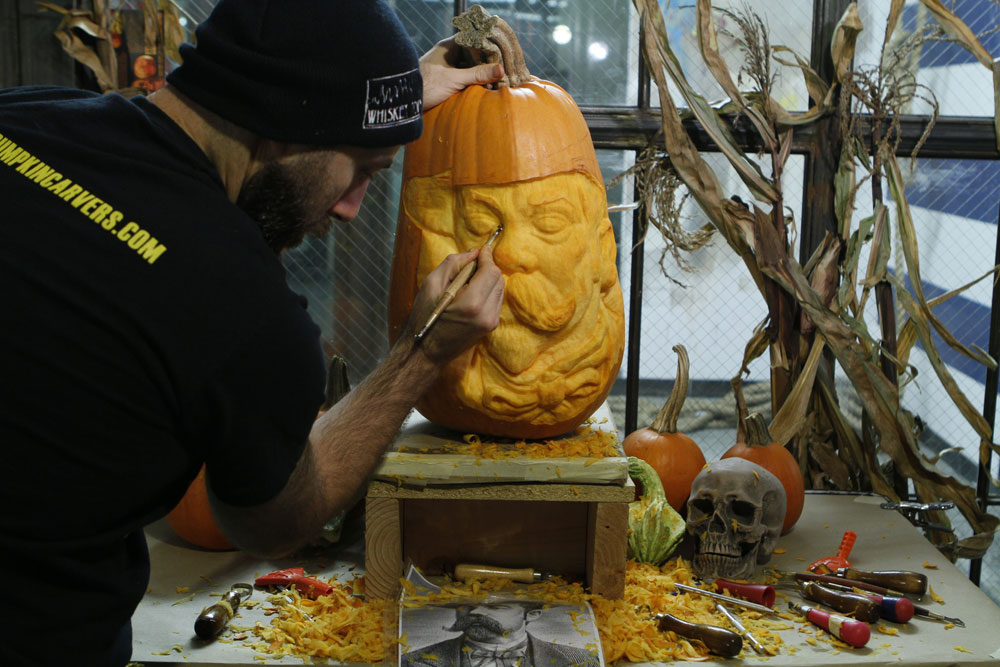
How does lighting add to the impact of your creations?
Light is such a major part of what we do. We often describe our style of work as painting with light, more so than carving. We only use candles for traditional jack-o’-lanterns; most of our lit pumpkins have LED bulbs installed in them. Not every pumpkin we create gets scooped out and lit, but when we do turn pumpkins into lanterns, we like saving that moment for late in the process. It creates a magical moment when the design lights up.

How long does it take to carve basic pumpkin designs versus your most detailed pumpkins?
It can take anywhere from a couple of hours to a whole day. Many of our detailed works of art take between six to twelve hours, and our pumpkins are often passed back and forth between our artists for hours until they are absolutely perfect. And that does not include all the time prior to carving, going back and forth with clients, picking pumpkins, washing and prepping the pumpkins, or the time involved after carving, when we deliver them or ship them out.
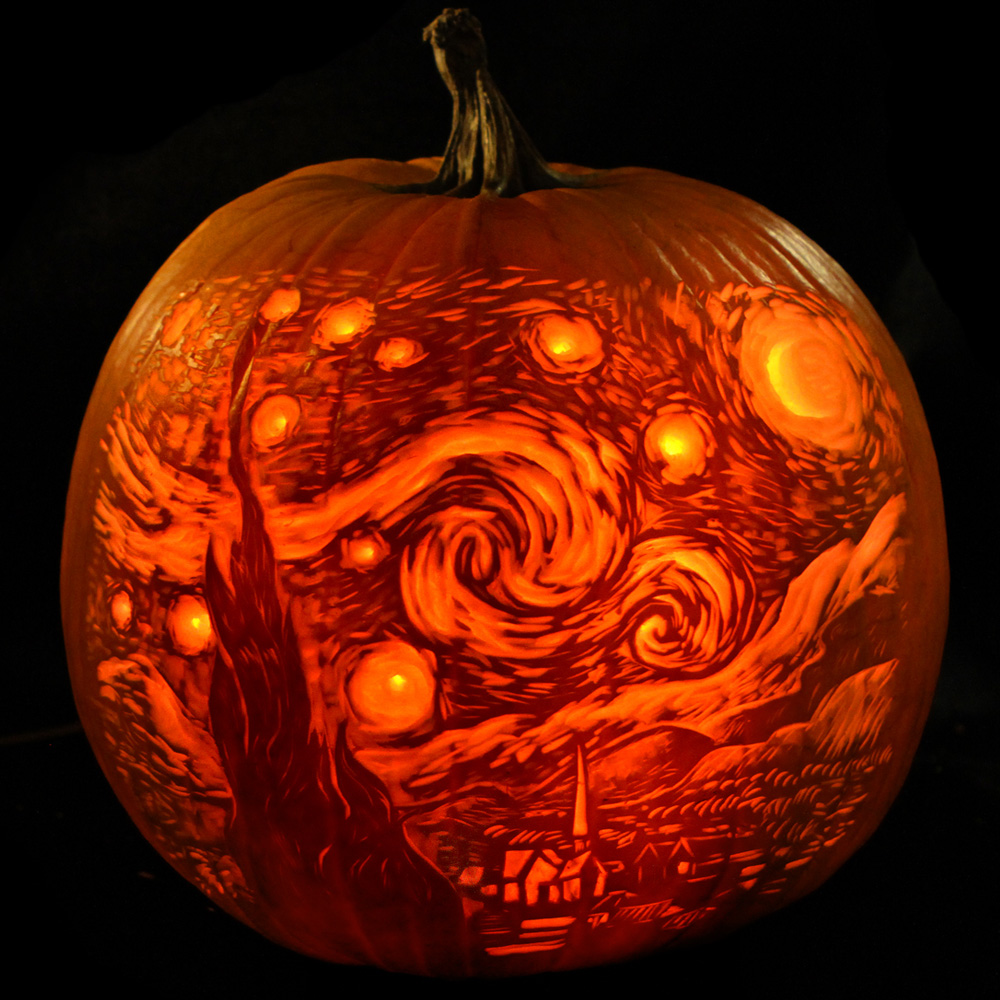
How much of your year is taken up by carving? What do you do for a living when you're not making pumpkin art?
We work year round on planning out and prepping for our projects, but pumpkins are only available (and in demand) in the fall. Between September 1 and Thanksgiving, we carve hundreds of pumpkins. During the rest of the year, we work on our personal artistic practices, which include fine arts, illustration work, and a lot of large-scale murals and street art, which we post on Instagram.
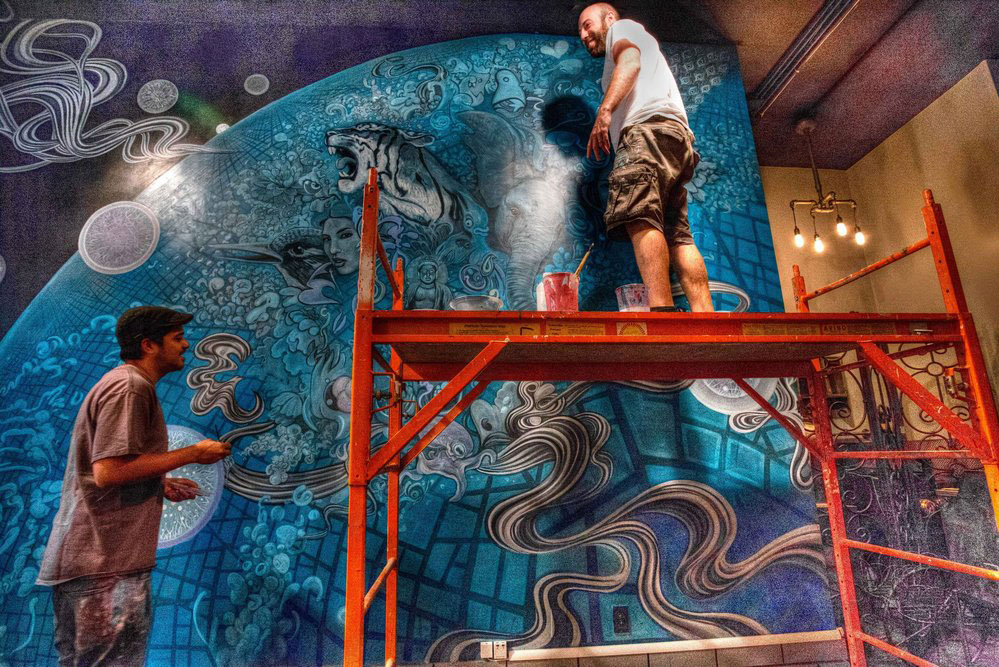
At what point did you have to bring in people to help with the demand?
For many years, it was just Chris and me. As we expanded, we started to bring in our support staff. At first, it was some friends to help scoop pumpkins; then we began adding carvers. Now our team includes over twenty artists, as well as administrators, project managers, delivery people, and shop assistants.
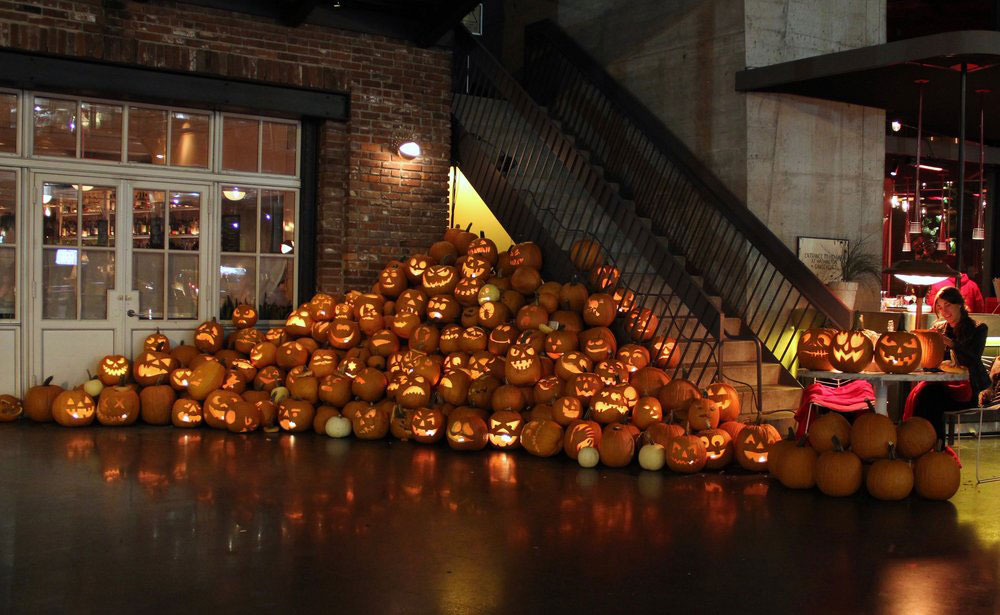
You also do pumpkin-carving demonstrations. Do people find it easy or difficult to learn how to create pumpkin art?
There are always challenges in creating a work of pumpkin art. It's not about easy or hard. It shouldn't be easy. The process should always be fun, though. It takes time and patience to create something you are proud of. We have always enjoyed teaching, and we do a lot of art education in various types of artwork, including pumpkins.
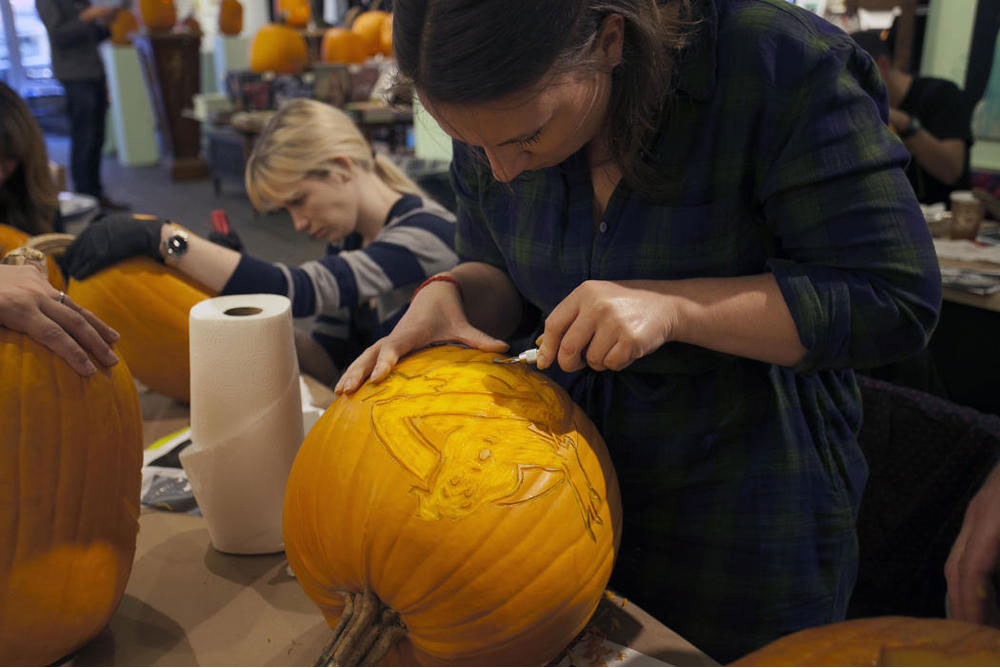
What kinds of tools do you use?
Our favorite tools include sculpting tools like ribbon loops, X–ACTO knives and other hobby or craft knives, and linoleum cutters. Other helpful items we have found are lemon zesters, toothbrushes, awls, and scouring pads. Many items around the house, kitchen, or workshop can be repurposed to use on pumpkins.
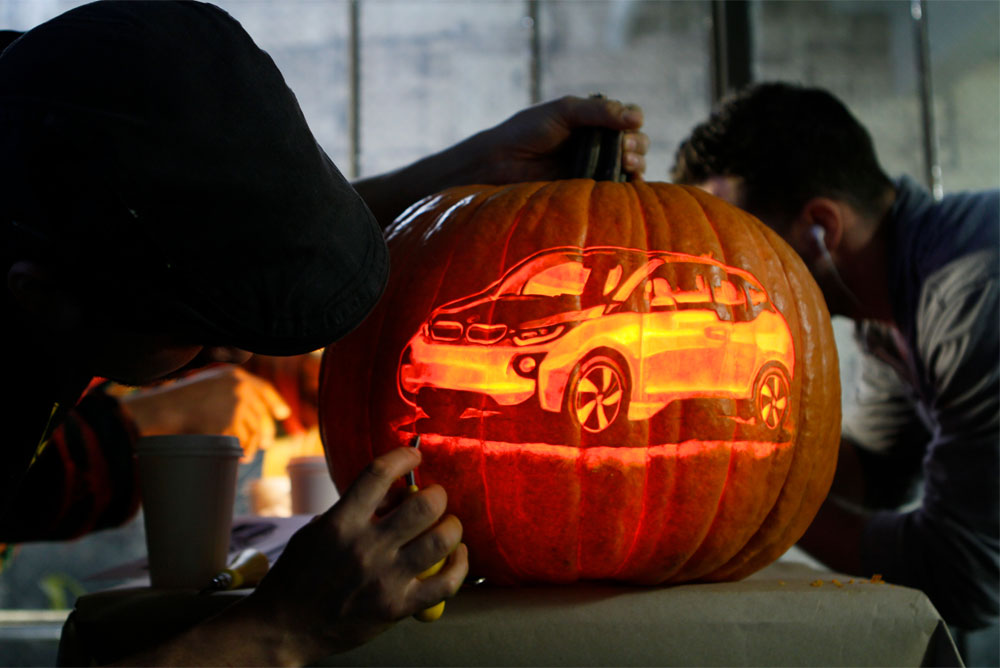
Speaking of favorites, what pumpkins stand out as being the ones you’re most proud of?
We have an artist series of pumpkins that we add to each year. We take a work of art that inspires us and recreate it in a pumpkin. Over the years, these have been based on contemporary artists like Alex Grey, Tara McPherson, and Alex Pardee, as well as past masters like Picasso, Magritte, Mucha, Klimt, and Dali. For the past several years, we have created one of our artist series pumpkins each Halloween for the Museum of Modern Art. We’re also incredibly proud of the works we have done for Marvel, Google, BMW, and many other amazing clients.
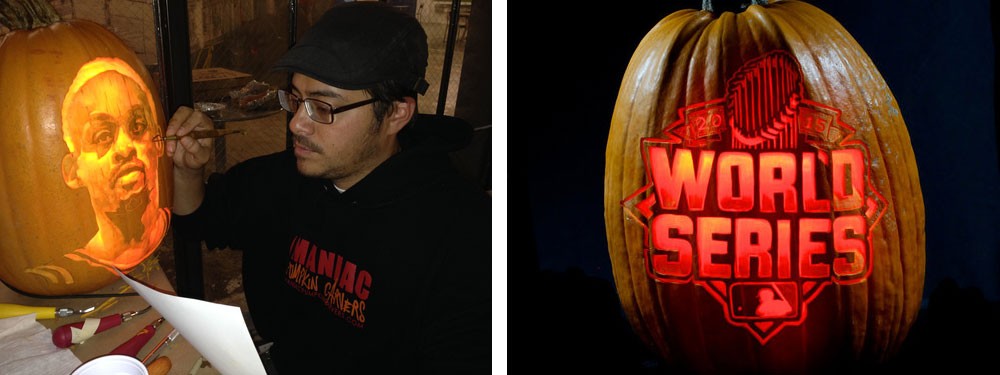
What creates more of a challenge: the texture or the shape of a pumpkin?
Misshapen pumpkins can be a gift. We like to find creative uses for them. The texture of a pumpkin can be a challenge, though, especially considering that we don't know if the pumpkin has a favorable texture until we've started carving. Because it is a fruit that we work with, some years the crops are not as good due to a variety of factors. Also, later in the season, when the pumpkins aren’t as freshly cut from the vine, the texture is noticeably different and more difficult to work with.
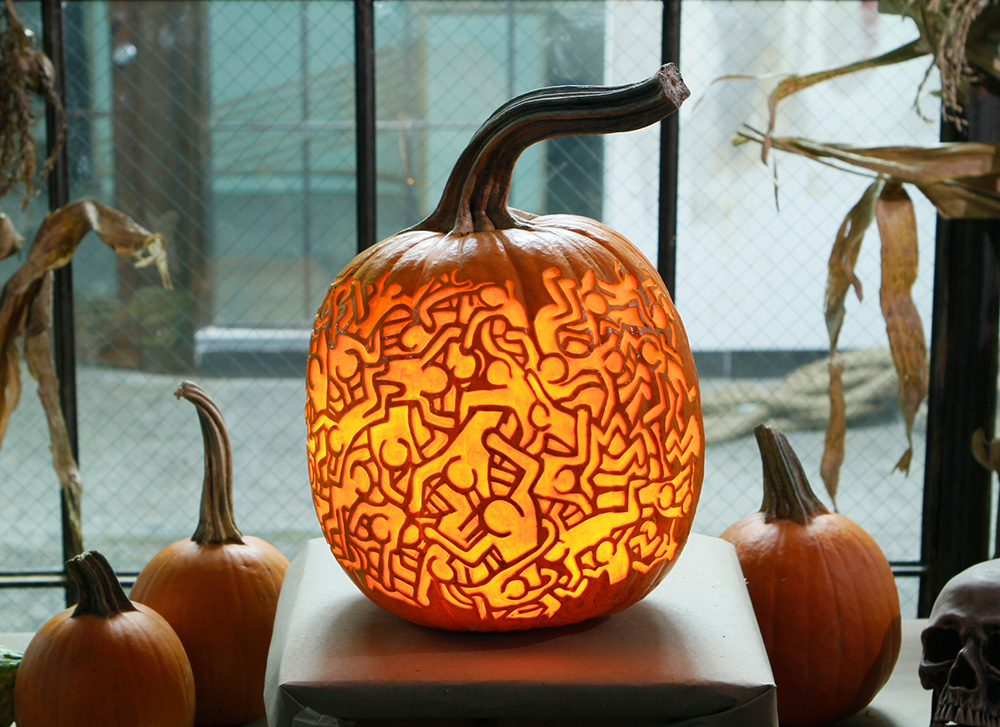
How long does your pumpkin art last? Are there ways you can preserve it?
A pumpkin is a fruit, so once we begin to carve, they begin to rapidly degrade. Our pumpkins last anywhere from a few days to a few weeks. Many of the things that we have tried over the years only prolong the pumpkins for a few days at most, but some of the things people recommend actually speed up the pumpkin breaking down. The most effective thing we have found is really to treat the pumpkin like cut fruit: when it’s not on display, keep it wrapped in plastic wrap and refrigerated or as cool as possible without freezing.
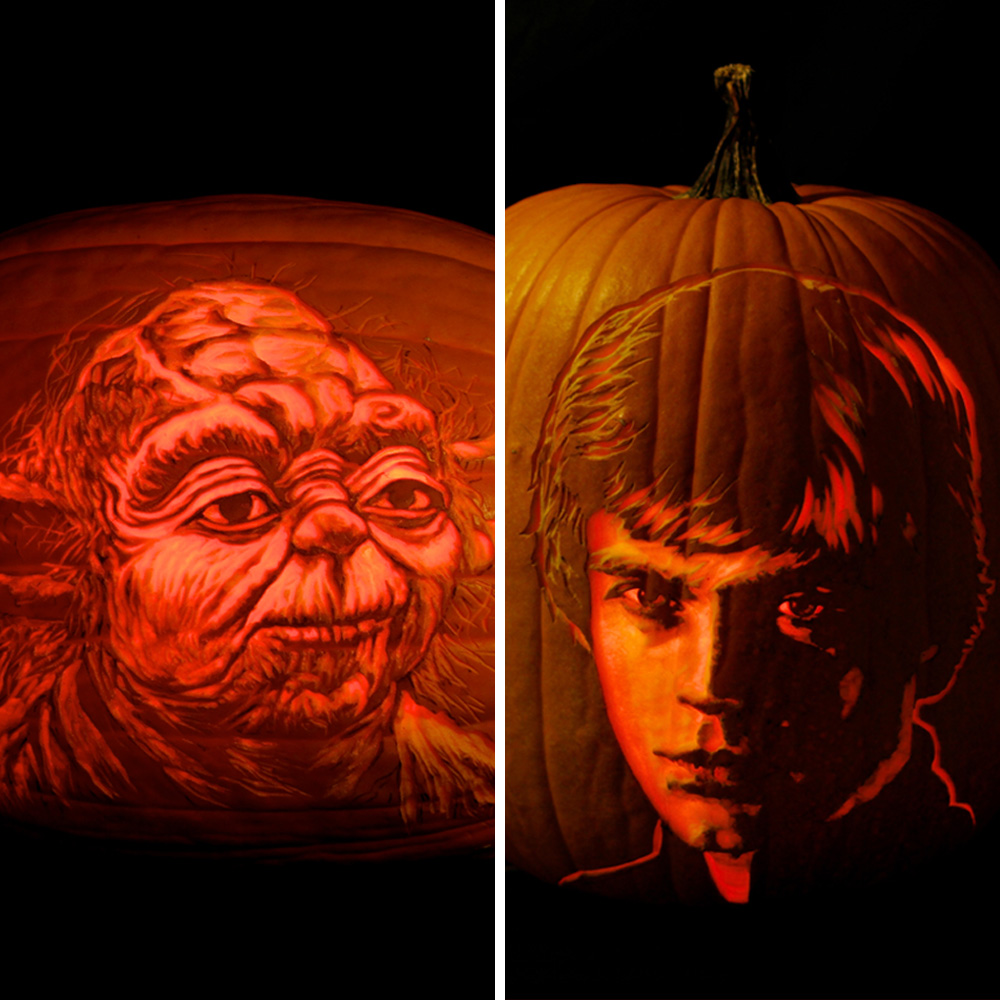
Does all this work you do on pumpkins affect how you personally enjoy pumpkin-themed items?
We embrace it all. We love eating pumpkin seeds and freshly baked pumpkin goods. We are always happy to try a few new pumpkin beers, too. We aren’t really into all the super sweet pumpkin spice stuff, though. But whatever it takes to get people in the spirit of the holiday makes us happy.
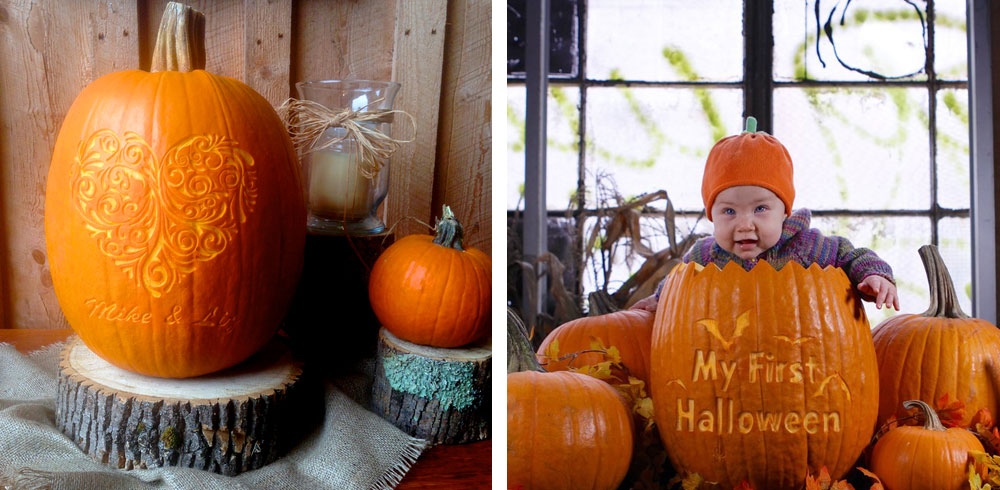
People will probably say, “Wow! What a great job!” What are some downsides that people may not realize?
We work long hours to get all our pumpkins out on time and before they rot. We get very little sleep during pumpkin season and pull many all-nighters. (Our sleep deprivation is actually what earned us the title “Maniac.”) We rarely see our friends or families during the fall, which can be extremely emotionally draining. And, physically, the long hours carving and even carrying and moving all those heavy pumpkins around really take a toll on the body. Carpal tunnel and back and shoulder pain are just part of the pumpkin season for us. Yoga, meditation, and massages all help, but by the end of the season we tend to be pretty beaten up.
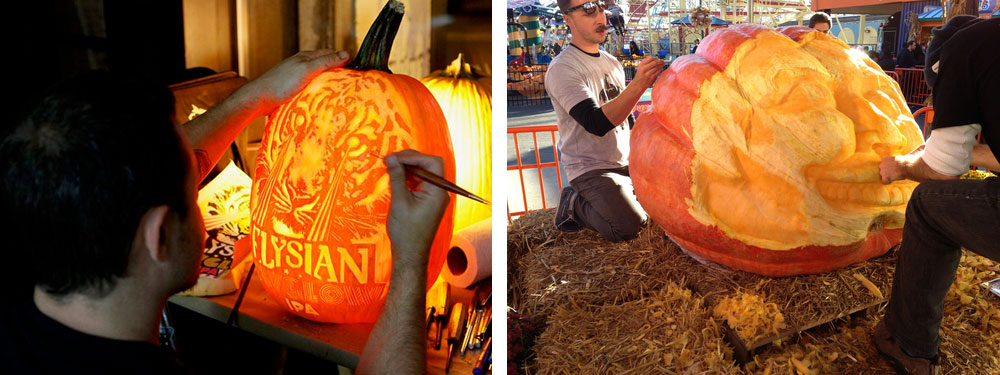
Your pumpkins are elaborate, but your business is not. Do you work best that way? Has much of your success been word of mouth?
We've built our business from the ground up by word of mouth from the beginning. We were artists first and then businessmen. We have learned a lot along the way. We were lucky to find a niche that we excelled at, and we gained recognition by being pioneers in our field and by putting out our best work at all times—we are our own harshest critics and constantly strive for excellence. We’re always trying to see how we can take our work to the next level, and our clients and fans recognize this. We have also turned down traditional marketing opportunities in favor of embracing social media. When one of our works goes viral, it has much more impact than advertising dollars.
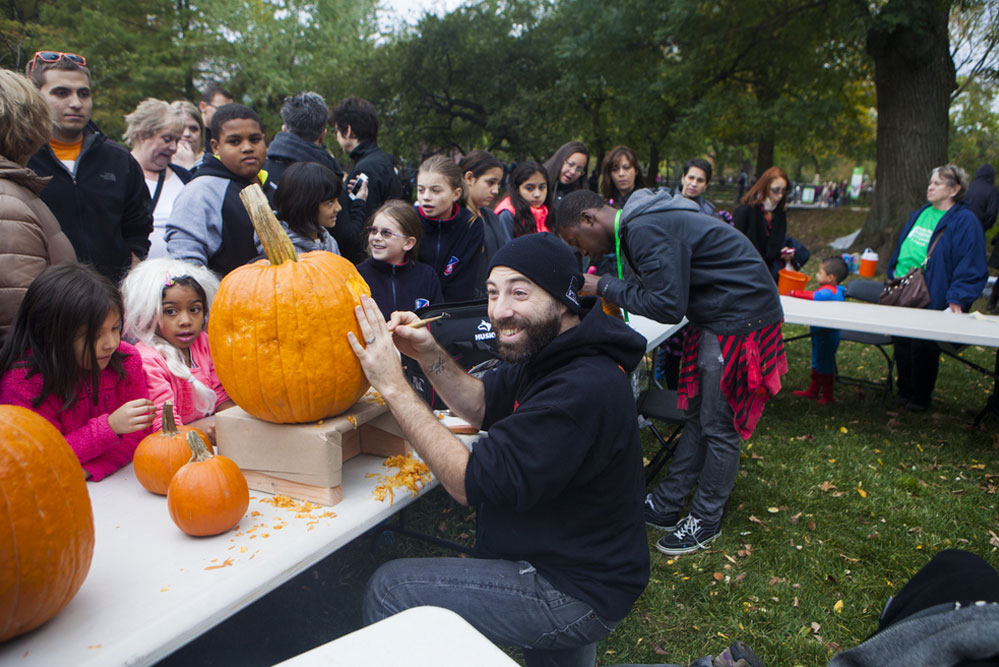
Are you content with where this business is, or do you have plans to grow it even further?
We are always looking for ways to grow our business and expand the services and products we offer, and there are plenty of projects that we are excited to bring to light. It’s always been important for us to grow at a manageable pace, though. Each year, we get better at expanding our business, but new stresses and new pressures come along with that. It’s been important to our growth to never take on a project if we don’t feel we can do our best; because of this, we make sure that we don’t take on more than we can handle. Our growth has to come naturally, so we can continue to deliver our best work.
For more info, visit maniacpumpkincarvers.com.
Up Next:
A Cut Above: Scary Good Pumpkin-Carving Tips

Posted in Feature, Issue 85 Vol 2 on Aug 03, 2017